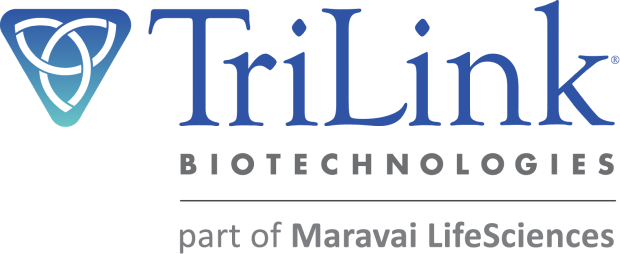mRNA MILESTONES
For decades, mRNA research has been building on incremental discoveries, eventually leading to an industry primed for a platform change in vaccine and therapeutic development. With an improved understanding of mRNA biology, chemistry and the production steps involved, mRNA-based vaccines and therapies are beginning to expand their place in the drug development landscape. Let’s journey through the major milestones in mRNA therapeutics research and commercialization.

Time Travelling Through mRNA History
START

mRNA first described as a "messenger" between DNA and proteins by two separate publications in Nature. Previously, how DNA was used to create proteins was not understood. Although these groups were the first to publish this idea, many seminal discoveries came before this date.

Think of it like having a recipe in an unknown language and a finished dish but having no idea how the ingredients were prepared to make the dish


Think of the mRNA's 5' cap sort of like all your kitchen applianes-together, they protect (fridge/freezer), organize (partry), and allow you to use (cook) your food (stove/oven/microwave)


T7 RNA polymerase is like the cook in the kitchen - bringing the ingredients together and doing the work to make the final dish.

Injection of direct mRNA into muscle resulting in gene expression is published. Even though mRNA is inherently unstable, this work demonstrated that a sufficient half-life could be achieved to elicit a biological response in vivo. All in all, suggesting a common route of vaccination is amenable to mRNA technologies.

Researchers show vasopressin mRNA injection into the brain of rats temporarily corrects diabetes insipidus, laying the foundation for mRNA therapeutics to fight neurodegenerative diseases.

Study shows that mRNA stimulates immune responses in mice. This stimulation generated an appropriate innate immune response like that seen after vaccination, laying the foundation for therapeutic mRNA vaccines.

TriLink BioTechnologies is founded in San Diego, California. By year-end, we move into our first commercial lab space, hire our first employees, and begin shipping oligonucleotides.

First mRNA clinical trial for cancer begins. Results published 8 years later demonstrated that mRNA-based cancer vaccines are feasible and safe. However, efficacy was not shown in this early study using unmodified mRNA.


A desired innate immune response is like smoke from cooking—it's productive when it's enough to turn on your smoke detector so you can put the fire out and then order takeout, but not so much smoke to imply a giant fire is burning down your house, and you definitely aren't eating that meal tonight.

TriLink establishes mRNA Contract Development Manufacturing Organization (CDMO) services. In the next 3 years, we open a state-of-the-art cGMP manufacturing facility, receive ISO 9001 certification for our quality management system, and expand our capabilities to support mRNA and oligonucleotide therapeutics.


saRNA is sort of like your pandemic sourdough bread starter: If you keep it at the right conditions, it’ll make more and more of itself to satisfy that COVID WFH bread addiction.


CRISPR in the kitchen would be like replacing that bruise on your apple with an equally sized, shaped, and flavorful piece so you could enjoy the entire thing. Not possible just yet—even cooking doesn’t accommodate a good CRISPR analogy at this point!

TriLink establishes GMP mRNA manufacturing. Manufacturing adds gram-scale mRNA production and expands our mRNA purification offerings. TriLink and Maravai LifeSciences move to a new global headquarters. Our new space includes 118,000 ft² of facility space with dedicated custom manufacturing and cGMP suites.

TriLink enters into an agreement with the U.S Department of Defense. This agreement enables us to build a new nucleic acid manufacturing facility to support future pandemic responses
PRESENT

START

mRNA first described as a "messenger" between DNA and proteins by two separate publications in Nature. Previously, how DNA was used to create proteins was not understood. Although these groups were the first to publish this idea, many seminal discoveries came before this date.

Think of it like having a recipe in an unknown language and a finished dish but having no idea how the ingredients were prepared to make the dish

mRNA cap discovered by Japanese scientist Yasuhiro Furuichi. The structure at the 5' end of the mRNA is an N7-methylated guanosine nucleotide, which has critical functions in mRNA stability, cellular localization, processing, and translation.

Think of the mRNA's 5' cap sort of like all your kitchen appliances—together, they protect (fridge/freezer), organize (pantry), and allow you to use (cook) your food (stove/oven/microwave)

T7 polymerase first commercialized. The T7 RNA polymerase is a DNA-dependent RNA polymerase from the T7 bacteriophage. It is widely used in research today for in vitro and in vivo mRNA synthesis.

T7 RNA polymerase is like the cook in the kitchen—bringing the ingredients together and doing the work to make the final dish.

Injection of direct mRNA into muscle resulting in gene expression is published. Even though mRNA is inherently unstable, this work demonstrated that a sufficient half-life could be achieved to elicit a biological response in vivo. All in all, suggesting a common route of vaccination is amenable to mRNA technologies.

Researchers show vasopressin mRNA injection into the brain of rats temporarily corrects diabetes insipidus, laying the foundation for mRNA therapeutics to fight neurodegenerative diseases.

Study shows that mRNA stimulates immune responses in mice. This stimulation generated an appropriate innate immune response like that seen after vaccination, laying the foundation for therapeutic mRNA vaccines.

TriLink BioTechnologies is founded in San Diego, California. By year-end, we move into our first commercial lab space, hire our first employees, and begin shipping oligonucleotides.

First mRNA clinical trial for cancer begins. Results published 8 years later demonstrated that mRNA-based cancer vaccines are feasible and safe. However, efficacy was not shown in this early study using unmodified mRNA.

Evidence of RNA containing modified nucleosides reducing the innate immune response is published. Minimizing innate immune response activation was a critical step to making mRNA therapeutics safe. The work was published by Katalin Karikó, Ph.D., and Drew Weissman, Ph.D., laying the foundation for the COVID-19 mRNA vaccine. The two have since won the Lasker Award and the Horwitz Prize.

A desired innate immune response is like smoke from cooking—it's productive when it's enough to turn on your smoke detector so you can put the fire out and then order takeout, but not so much smoke to imply a giant fire is burning down your house, and you definitely aren't eating that meal tonight.

TriLink establishes mRNA Contract Development Manufacturing Organization (CDMO) services. In the next 3 years, we open a state-of-the-art cGMP manufacturing facility, receive ISO 9001 certification for our quality management system, and expand our capabilities to support mRNA and oligonucleotide therapeutics.

Pre-clinical studies show protective vaccination with mRNA and self-amplifying RNA (saRNA). Thus, two groups publish results supporting the development of mRNA-based vaccines for infectious diseases. In one, a naked, intradermally injected mRNA vaccine protects mice from influenza A. In the other, a newly developed lipid nanoparticle delivery system with a saRNA vaccine protects mice against respiratory syncytial virus (RSV).

saRNA is sort of like your pandemic sourdough bread starter: If you keep it at the right conditions, it’ll make more and more of itself to satisfy that COVID WFH bread addiction.

RNA-guided CRISPR/Cas9 system harnessed for genome editing. Two groups simultaneously publish in Science the adaptation of a bacterial immune system for gene editing in eukaryotic systems. These seminal papers opened a new era in cell and gene therapy, allowing for one-time DNA modification to potentially cure disease.

CRISPR in the kitchen would be like replacing that bruise on your apple with an equally sized, shaped, and flavorful piece so you could enjoy the entire thing. Not possible just yet—even cooking doesn’t accommodate a good CRISPR analogy at this point!

TriLink establishes GMP mRNA manufacturing. Manufacturing adds gram-scale mRNA production and expands our mRNA purification offerings. TriLink and Maravai LifeSciences move to a new global headquarters. Our new space includes 118,000 ft² of facility space with dedicated custom manufacturing and cGMP suites.

TriLink enters into an agreement with the U.S Department of Defense. This agreement enables us to build a new nucleic acid manufacturing facility to support future pandemic responses
PRESENT




